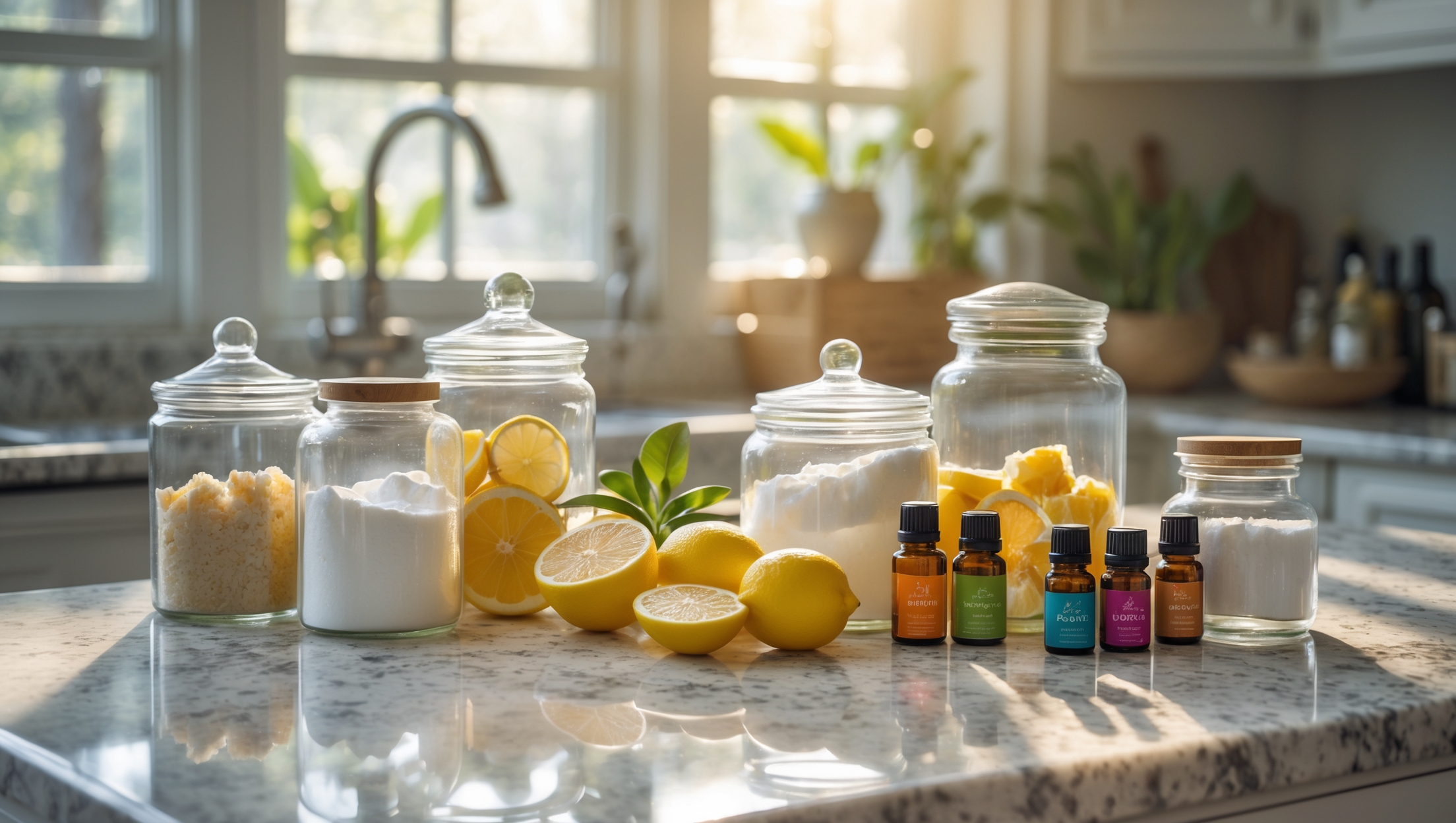Introduction: The Bright Future of DIY Natural Cleaning Products
Eco-friendly living is more than a trend—it’s a lifestyle shift rippling through homes and communities worldwide. As awareness grows about the health and environmental risks of conventional cleaners, demand for natural alternatives soars. For many, DIY natural cleaning products are the answer, combining effectiveness, affordability, and sustainability. If you’re passionate about green cleaning and considering turning your hobby into a startup, you’re in good company. But in a crowded, competitive marketplace, how do you make your brand stand out and drive real sales?
This guide dives deep into actionable marketing strategies tailored for DIY natural cleaning product startups. Whether you’re selling at farmers’ markets, launching an online store, or starting small in your neighborhood, these proven tactics can help you build brand awareness, foster customer loyalty, and carve out your niche. We’ll cover everything from branding and storytelling to leveraging social media, collaborating with influencers, and nurturing community relationships. Ready to transform your passion for natural cleaning into a thriving business? Let’s get started.
Understanding Your Target Audience
Define Your Ideal Customer
Successful marketing begins with a crystal-clear understanding of your target audience. For DIY natural cleaning products, your customers may include:
- Eco-conscious families seeking safer alternatives
- Individuals with allergies or sensitivities
- Pet owners concerned about toxic ingredients
- Minimalists and zero-waste advocates
- Health-focused millennials
Conduct surveys, participate in online forums, and engage with potential customers to learn about their needs, concerns, and purchasing habits. Use this data to create detailed customer personas, guiding your branding and messaging.
Identify Pain Points and Motivations
What drives your customers to seek natural cleaning products? Common motivations include:
- Desire for non-toxic, safe cleaning solutions
- Reducing environmental impact
- Supporting small, local businesses
- Transparency in ingredient sourcing
Highlight how your products address these pain points across your marketing channels.
Crafting a Compelling Brand Story
Develop Your Unique Selling Proposition (USP)
With many natural cleaning options available, a strong USP sets you apart. Consider what makes your products unique:
- Locally sourced or foraged ingredients
- Plastic-free or reusable packaging
- Customizable scents or formulas
- Handmade, small-batch production
Weave your USP into your brand story, website copy, and packaging.
Tell an Authentic Story
Consumers connect with brands that have a mission. Share your journey—why you started, the challenges you overcame, and your commitment to eco-friendly practices. Use your website’s About page, social media bios, and email newsletters to communicate your values and passion.
Branding and Packaging That Sells
Design Matters
First impressions count. Invest in thoughtful, eco-friendly packaging that reflects your brand. Glass jars, kraft paper labels, and refillable containers resonate with eco-conscious buyers. Work with a graphic designer or use design platforms to create a clean, attractive logo and consistent color palette.
Labeling for Transparency
Clearly list all ingredients and their sources. Highlight certifications (organic, cruelty-free, etc.) if applicable. Transparent labeling builds trust and confidence in your products.
Building Your Online Presence
Launch a User-Friendly Website
Your website is your digital storefront. Choose an e-commerce platform like Shopify, WooCommerce, or Wix for easy setup. Key features should include:
- Clear product descriptions and ingredient lists
- High-quality photos (before and after cleaning shots)
- Customer testimonials and reviews
- Simple, secure checkout process
- Frequently Asked Questions (FAQ) section
SEO for Natural Cleaning Products
Optimize your website for search engines. Use keywords such as “natural cleaning products,” “eco-friendly cleaners,” and “DIY home cleaning solutions” in your product names, descriptions, and blog content. Write helpful guides (e.g., “How to Choose Safe Cleaning Products for Kids and Pets”) to attract organic traffic.
Winning Social Media Strategies
Choose the Right Platforms
Instagram and Pinterest are ideal for visually showcasing your products and DIY recipes. Facebook groups connect you with local eco-conscious communities. TikTok can help you reach a younger, trend-driven audience with quick cleaning hacks and behind-the-scenes videos.
Content Ideas That Engage
- DIY Tutorials: Short videos demonstrating how to use your products or make simple cleaners at home.
- Ingredient Spotlights: Posts that explain the benefits of ingredients like baking soda, vinegar, or essential oils.
- Before & After Photos: Show the effectiveness of your products on real messes.
- Customer Testimonials: Share user-generated content and reviews.
- Eco-Tips: Ideas for reducing waste and living sustainably.
Use relevant hashtags (#ecocleaning, #zerowastehome) and engage with comments to build community.
Collaborate with Influencers
Partner with micro-influencers in the green living space. Offer free samples for honest reviews or host giveaways to increase brand exposure. Choose influencers whose audience aligns with your target market for authentic engagement.
Offline Marketing: Building Local Roots
Farmers’ Markets and Pop-Up Events
Set up booths at local markets, fairs, or pop-up shops. Offer product demos, free samples, or bundle deals. Prepare printed materials (business cards, brochures) with your website and social media handles.
Workshops and Community Classes
Host DIY cleaning workshops at community centers or partner with local eco-stores. Teach attendees how to make basic cleaners, then offer your branded products as convenient, ready-made solutions.
Retail Partnerships
Pitch your products to local health food stores, zero-waste shops, or eco-boutiques. Prepare a professional product catalog and offer to stock on consignment if necessary to build initial relationships.
Leveraging Customer Reviews and Word-of-Mouth
Encourage Honest Feedback
Follow up with customers after purchase via email or a thank-you card, requesting a review. Make it easy with direct links or QR codes. Address any negative feedback promptly and professionally.
Referral Programs
Implement a simple referral program: reward existing customers with a discount or free sample for referring friends. This not only increases sales but builds a loyal customer base.
Educational Content Marketing
Blogging for Authority
Regularly publish blog posts that answer common questions or bust myths about natural cleaning. Topics can include:
- “Why Go Green? The Hidden Dangers of Chemical Cleaners”
- “5 Ingredients to Avoid in Household Products”
- “DIY vs. Store-Bought: Which Natural Cleaner Works Best?”
Share these posts on your social channels and in email newsletters.
Downloadable Resources
Create printable cleaning checklists or ingredient guides as lead magnets. Exchange for email sign-ups to grow your mailing list for future promotions.
Promotions and Limited-Time Offers
Seasonal Campaigns
Launch themed promotions around spring cleaning, back-to-school, or Earth Day. Offer limited-edition scents or bundled kits to drive urgency.
Loyalty Programs
Reward repeat buyers with points, discounts, or exclusive products. Use email automation to remind customers when they’re eligible for rewards.
Tracking Results and Optimizing Strategies
Monitor Key Metrics
Use analytics tools to track website traffic, social media engagement, and conversion rates. Identify top-performing products and content to guide future marketing efforts.
Solicit Direct Customer Feedback
Send periodic surveys to your email list to learn what’s working and what can be improved. Use insights to refine your marketing approach and product offerings.
Legal Compliance and Transparency in Marketing
Truthful Claims
Avoid making unsubstantiated claims about efficacy or health benefits. If you use terms like “organic” or “non-toxic,” ensure you meet relevant regulations and can provide documentation if asked.
Labeling Requirements
Review local and federal requirements for ingredient disclosure and product safety. Transparent, honest marketing builds trust and credibility over time.
Conclusion: Growing Your DIY Natural Cleaning Brand Sustainably
Building a successful DIY natural cleaning product startup isn’t just about crafting great formulas—it’s about connecting with people who share your values. By understanding your audience, crafting a compelling brand story, and embracing both digital and grassroots marketing tactics, you can create loyal customers and inspire real change in your community. Remember, authenticity, transparency, and education are your greatest assets. Don’t be afraid to share your passion, admit your learning moments, and invite your customers into your journey.
As you grow, keep listening to your audience and adapting your strategies. Celebrate small wins, whether it’s a glowing customer review, a new partnership, or your first repeat order. The green cleaning movement needs passionate entrepreneurs like you—ones who care deeply about both people and the planet. With the right marketing foundation, your startup can flourish, making homes cleaner and the world a little brighter, one bottle at a time.
Start small, stay true to your values, and let your story shine through every aspect of your brand. Your commitment to natural, sustainable cleaning isn’t just a selling point—it’s a movement. And you have the tools to lead it.


When defining your target audience, did you find that eco-conscious families respond better to in-person events like farmers’ markets, or do online channels work just as well for reaching them? Any tips on how to choose where to focus first as a small startup?
Eco-conscious families often appreciate the personal connection and hands-on experience at in-person events like farmers’ markets, which can help build trust quickly. However, online channels are valuable for reaching a broader audience. As a small startup, consider starting with local events to get direct feedback and build community, then gradually expand online as you grow.
You mentioned collaborating with influencers to grow brand awareness, but I’m wondering how smaller startups with limited budgets can approach influencers without spending a lot. Are there effective low-cost strategies for this?
Smaller startups can reach out to micro-influencers who have loyal, engaged audiences and often accept free product samples or small commissions instead of large payments. Personalize your pitch, highlight shared values, and offer to co-create content, which can make partnerships feel more authentic without requiring a big budget.
You mention selling at farmers’ markets and launching an online store as options. What are some specific marketing strategies that work better for in-person events versus online sales when it comes to DIY natural cleaning products?
At in-person events like farmers’ markets, offering live demos and providing free samples help people experience your products firsthand. Engaging attendees with your story and answering questions also build trust. For online sales, focus on high-quality photos, clear ingredient lists, and customer reviews. Social media promotions and limited-time offers can boost your digital reach and conversions.
For startups just getting started at local farmers’ markets, what are some practical first steps to create customer personas when resources for formal surveys are limited?
At local farmers’ markets, you can start by observing and chatting with your first customers to learn about their needs and preferences. Take notes on their age range, questions they ask, and reasons for interest. After a few events, look for common traits or feedback. Over time, you’ll build informal but useful customer personas to guide your marketing.
I noticed you highlighted selling at farmers’ markets and launching an online store. If I’m short on time, which route do you think is more effective for building customer loyalty and brand awareness in the beginning?
If your time is limited, selling at farmers’ markets is often more effective for building customer loyalty and brand awareness at the start. Meeting customers face-to-face lets you tell your story, answer questions, and get immediate feedback, which helps form lasting connections quickly.
When defining customer personas for natural cleaning products, how do you actually conduct surveys or find people to interview? Are there certain forums or online groups you’ve found especially useful for getting honest feedback as a beginner?
To find people for surveys or interviews, try reaching out in Facebook groups, Reddit communities like r/CleaningTips or r/ZeroWaste, and local sustainability forums. You can also ask friends and family to refer people who fit your target audience. Being active and genuine in these spaces helps you get honest, useful feedback.